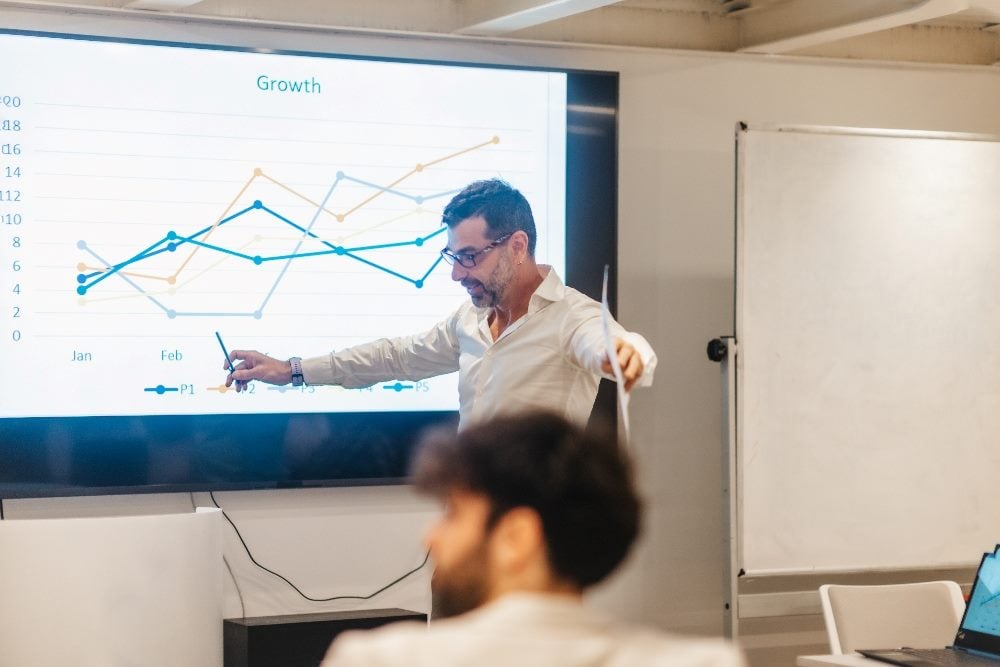The Gist
- Costly insight. Decisions are expensive.
- Helpful research. Traditional studies on human behavior may be helpful.
- Unrealistic expectations. We overpromise perfection when perfection isn't always needed.
Decisions Are Expensive
According to recent McKinsey & Company research, executives spend nearly 40% of their time making decisions. Deciphering the results of a survey of 1,200 global business leaders, they estimated that inefficient decision-making costs the average Fortune 500 company $250 million in lost wages annually. Add to that the results of decision fatigue, a real phenomenon adversely affecting both the quality of decisions and the health of the decision-maker, and it’s obvious any improvement to the decision-making process should have measurable and immediate benefits.
In an era deeply entrenched in the information age, where data is universally and effortlessly accessible, and where human intelligence is significantly augmented by artificial intelligence, why does good decision-making, in some instances, appear to be even more challenging? Let's take a look at data-driven decision-making.
Data-Driven Decision-Making: Too Much Data to Make Good Decisions
Common wisdom would suggest increasing access to more data should be enormously helpful to this effort. According to reliable estimates, 328.77 million terabytes of data are created daily. For more than a decade, year over year, data creation has been measured in zettabytes! I don't know about you, but the prefix "zetta-" implies to me we are running out of ways to describe big numbers. (As of the writing of this article, "gazillion" was still a made up measurement, but that may change by the time this is published). We have reached a point where our collection of data is nearly unimaginable in quantity and scope.

Related Article: The Imperative of Data Literacy in Business Decision-Making
Why Isn't All This Data More Helpful in Decision-Making?
In many cases, the sheer volume of data erodes the confidence of the decision-maker. How can we know with certainty if we have examined enough research, identified the best trusted resources and weighted those inputs properly? How can we be certain we have avoided outlying examples or anomalies that lead to an incorrect conclusion? Even if the final decision isn't bad, how much better could the decision have been given more research, more resources and more evaluation?
Traditional Decision-Making Research
Traditional research on decision-making, such as that performed by Daniel Kahneman and Amos Tversky in the 1970s, may give us some insight. Their prospect theory describes loss-aversion bias suggesting that people feel the negative impact of losses more strongly than the positive impact of gains. Thinkers like Barry Schwartz have applied this to consumer behavior. It is one of the rationalizations for marketing a few brand options as opposed to hundreds. More options increase the probability of a suboptimal choice.
Too May Options
The human mind, presented with only one option will react with stress and skepticism — think of the last time you saw just one head of lettuce in the produce section at the grocery store, you probably thought something was wrong with it and left it on the shelf. If we are presented with several options, this stress is relieved, and positive emotions are created, allowing for autonomy of choice.
However, as options increase to an overwhelming number, the odds of a suboptimal decision — a comparative loss — increases. We feel the potential loss more strongly than the potential gain, and confidence in the choice diminishes.
Beyond customer experience, this is the root cause of decision paralysis, sidelined corporate initiatives, stymied innovation, too few 2-point conversions in the NFL, and other forms of FOMO (Fear of Missing Out). It is a common human bias, most of us possess at some level.
'Satisficers'
Nobel Prize-winning psychologist and economist Herbert A. Simon coined the term "satisficers" to describe individuals who are able to move forward with choices that were "good enough" but not optimal (he mashed up the words "satisfy" and "suffice" to display his Nobel-level cleverness). Satisficers are apparently healthier and happier people, able to choose efficiently and move on with their lives, but I don't read about too many business intelligence (BI) tools, search engines, or conversational AI options advertised to produce merely adequate options.
Thinking Shortcuts
Instead, we claim to seek optimal choices, but the human brain is wired to create thinking shortcuts, or heuristics, to pare down choices and streamline the decision-making process. This happens without perception, and is one reason some decision-makers, claiming to rely on data, actually cherry-pick data to support their own assumptions, agendas or personal biases. The old adage "Don't let your data get in the way of your conclusions," is at play, even in our supposedly data-driven decision-making culture.
Related Article: Data-Driven Strategies: How to Overcome Data Challenges in Business
Customer Experience and Marketing Strategy Suffer From the Promise of Perfection
As marketers, we are very interested in predicting consumer preferences better than our competition and we are willing to pay for that pursuit.
Looking for the Familiar
According to Forrester, “25% of organizations use 10 or more BI platforms, 61% of organizations use four or more, and 86% of organizations use two or more.” Despite best intentions to consolidate these platforms, promises to do so rarely come to fruition, and choices of which to use generally fall to a preference based on comfort for the user — a bias toward the familiar.
Seeking a Smooth Experience
Consumers, likewise, seek a smooth experience ending in satisfaction and assurance and an optimal choice. To gain this they rely heavily on the customer journey we map out for them and the search options, more and more machine-driven, we provide. Generative AI, by design, is a consensus of previous decisions that can hallucinate optimization that may not exist.
On both sides of the transaction, we are seeking shortcuts to perfection through data-driven decision-making.
Sometimes 'Good Enough' Is Good Enough
I think we will get to a place where our expectations are balanced, data-driven decision-making is held to a reasonable standard, and customer experiences are delivered without unreasonable promises. In short, we'll learn the beauty of "satisfication." Until then, the journey to the bottom of the funnel may be a little rocky for all of us.
Learn how you can join our contributor community.
